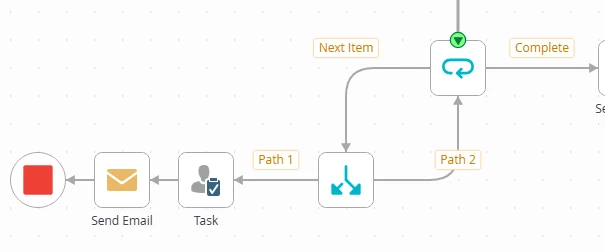We have a need to concurrently send a dynamic number of tasks to people in a workflow. In my testing I have found a way to do this using Loop and Split tasks where each loop creates a separate sub-path, and once the looping is complete the workflow carries on with other steps. While this works, if I look at the existing View Flow of an instance I see the loop and the sub path occurring and then the workflow continues, but I can’t drill into the specific loops. Can anyone advise if there are any issues with this solution, or if there would be a better approach to take? Included is a diagram of the pertinent steps.


